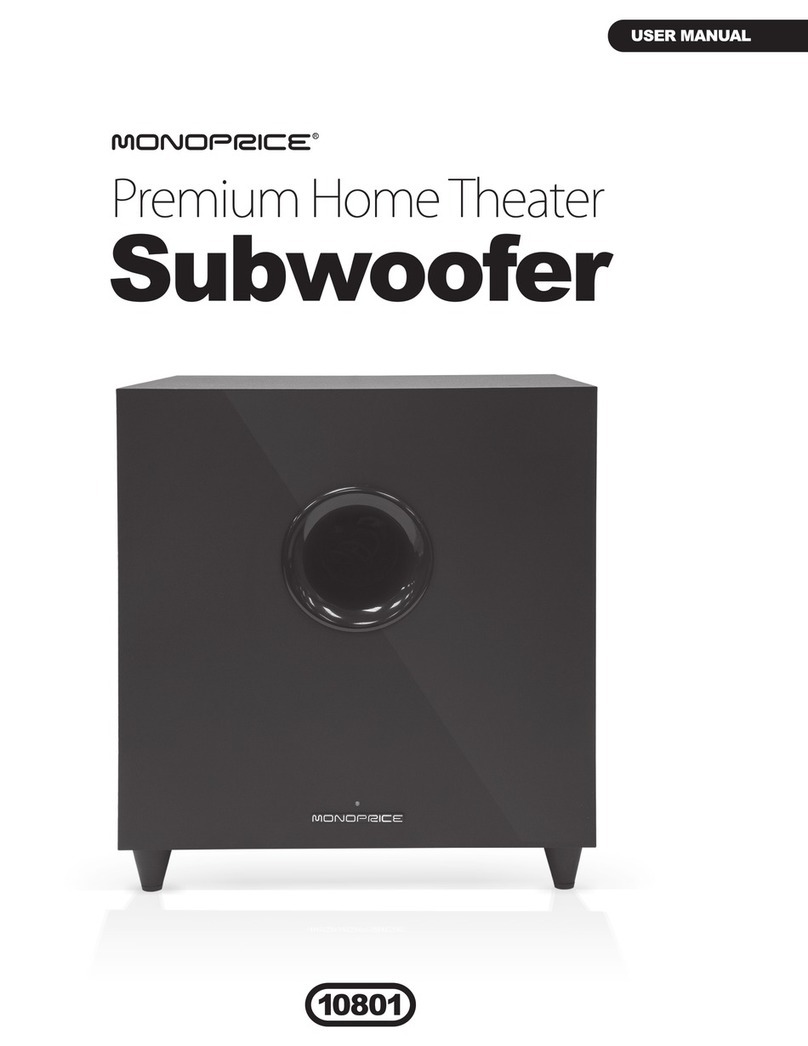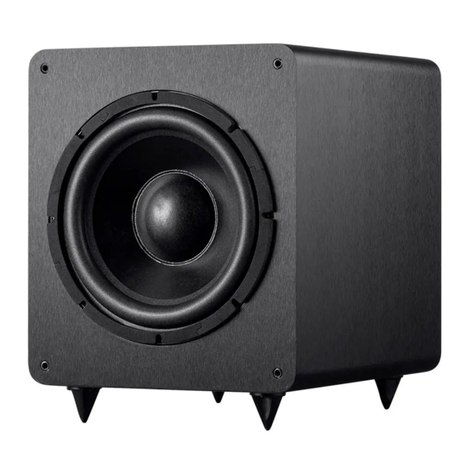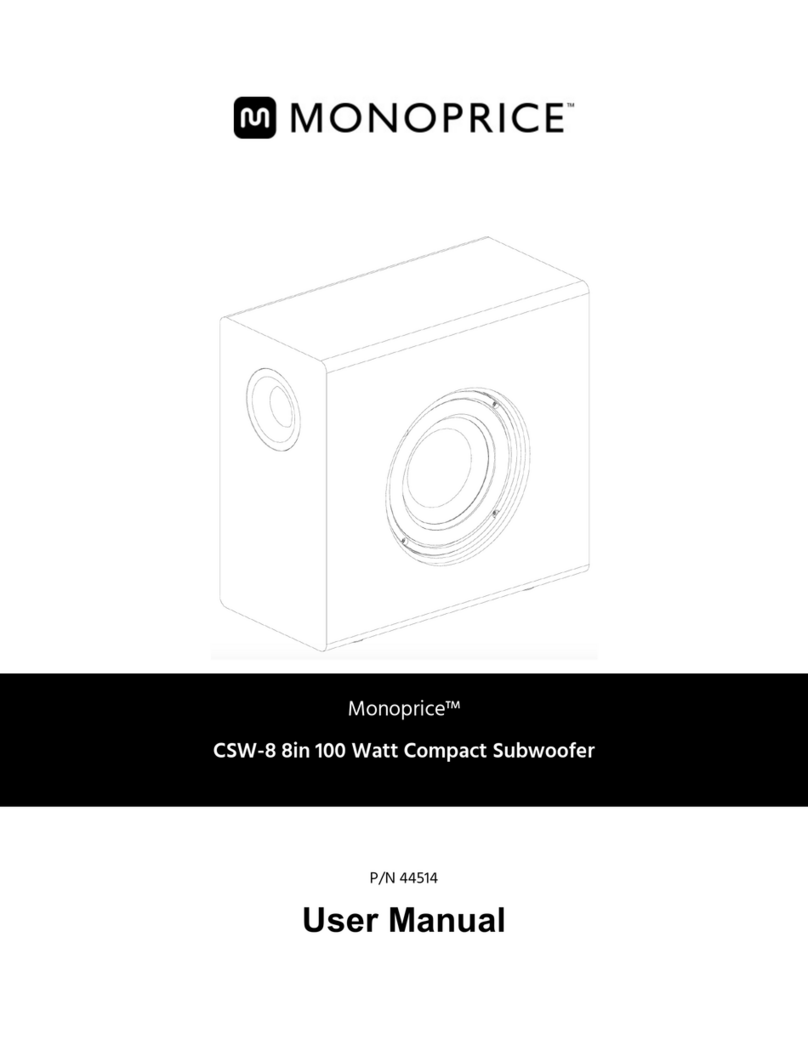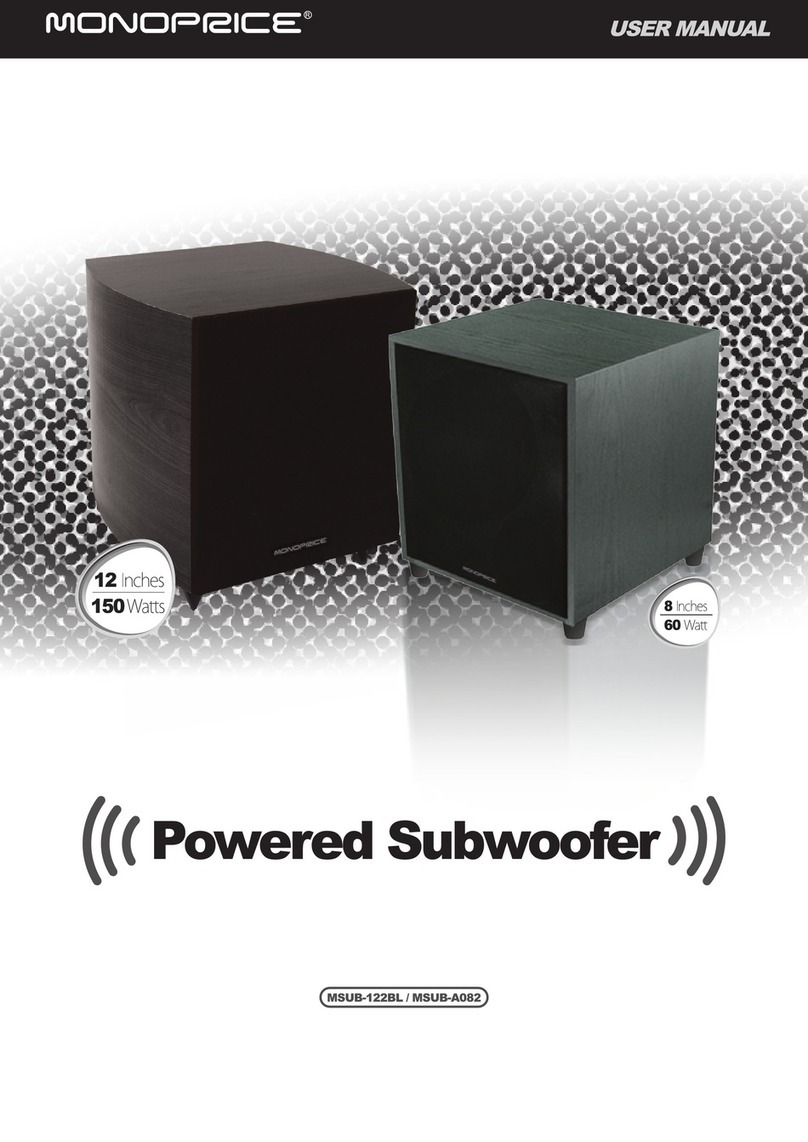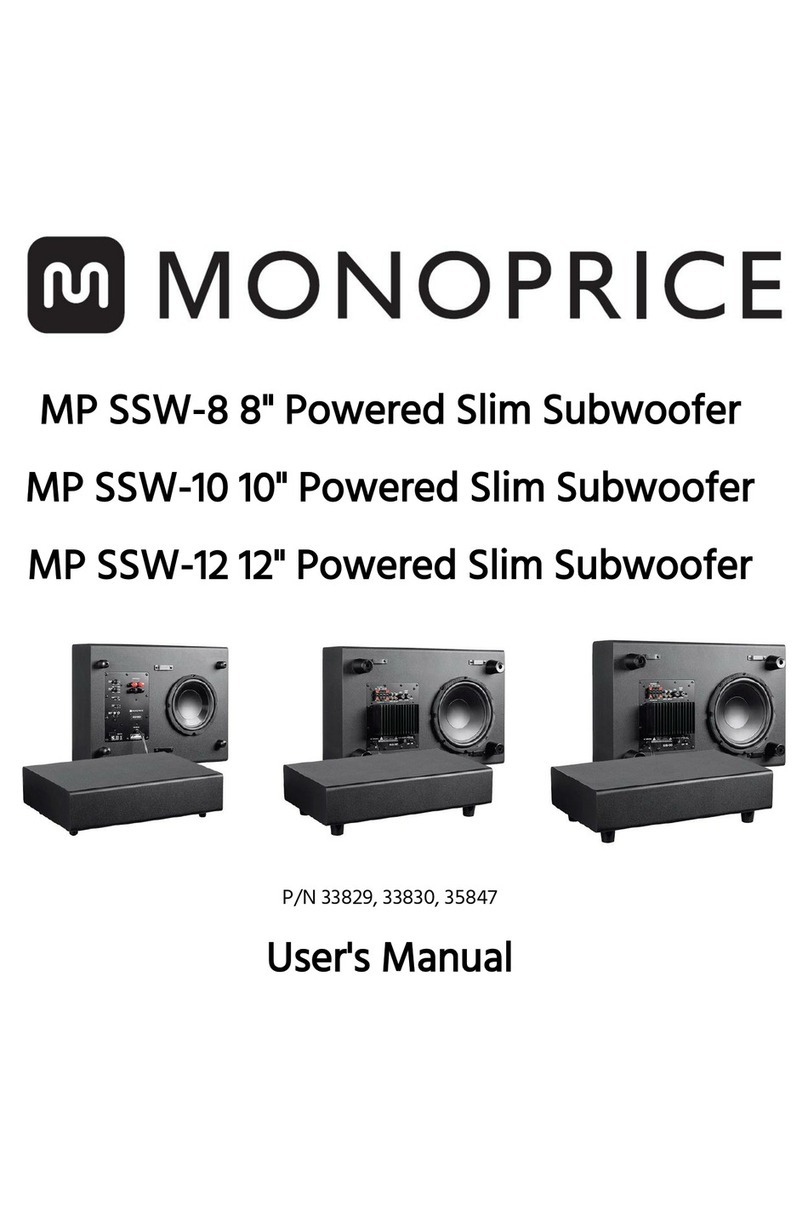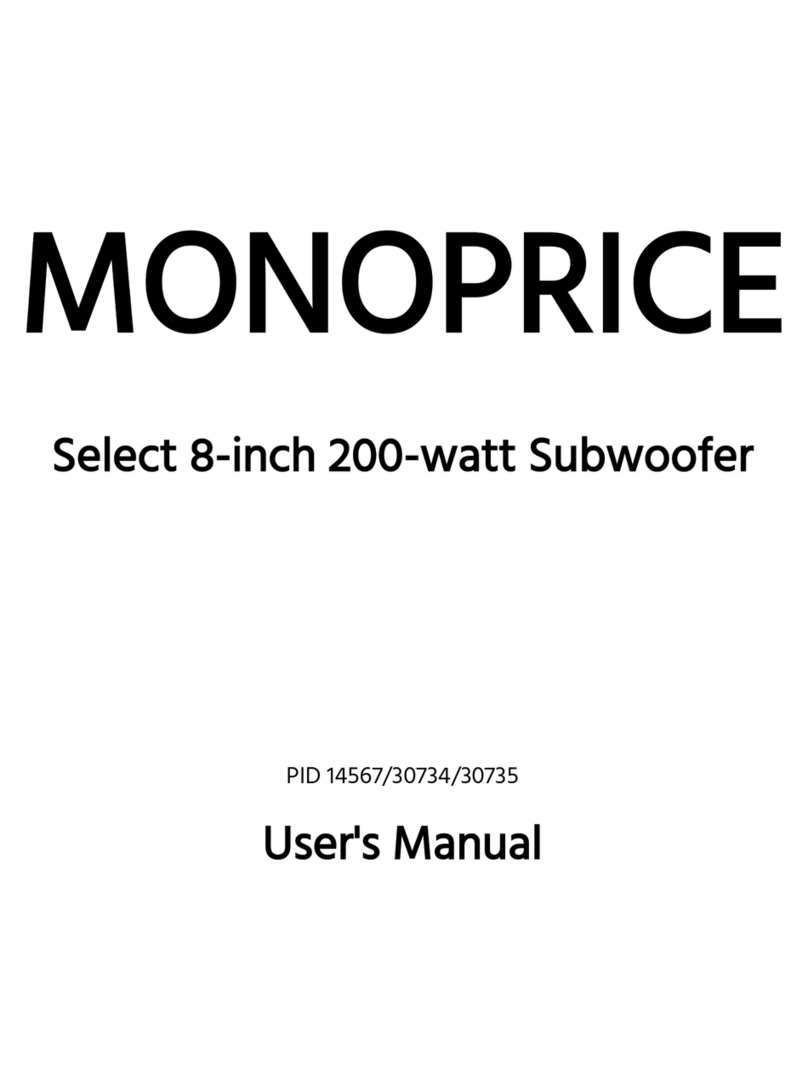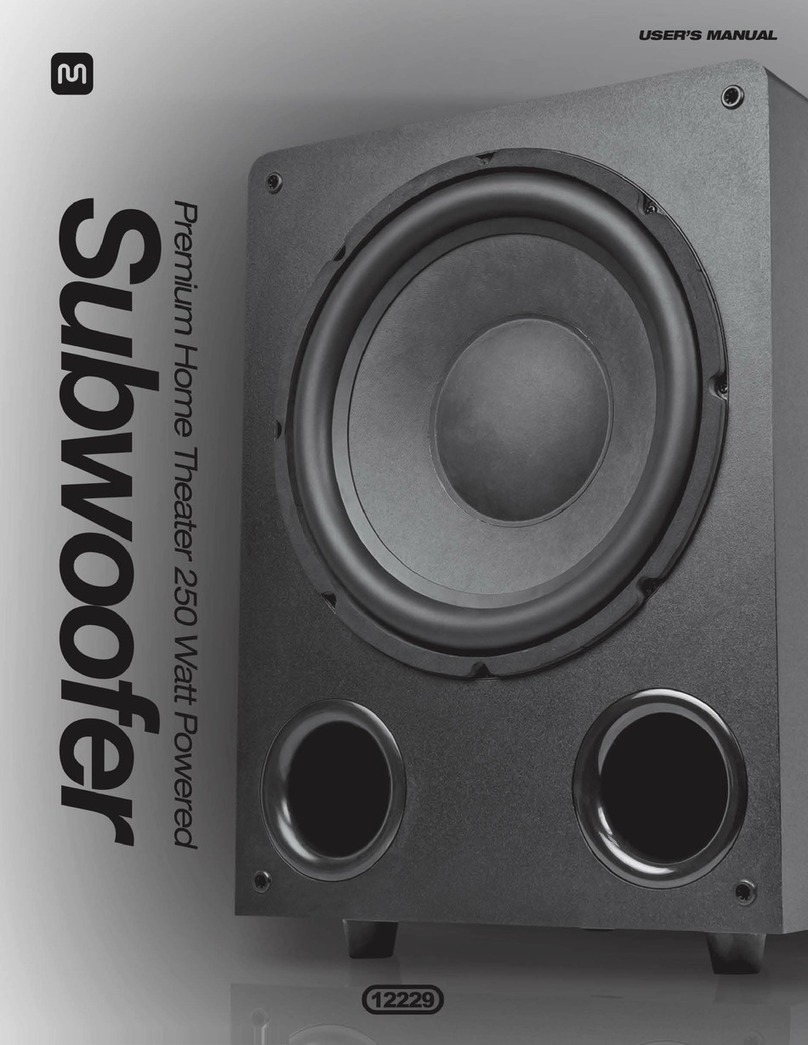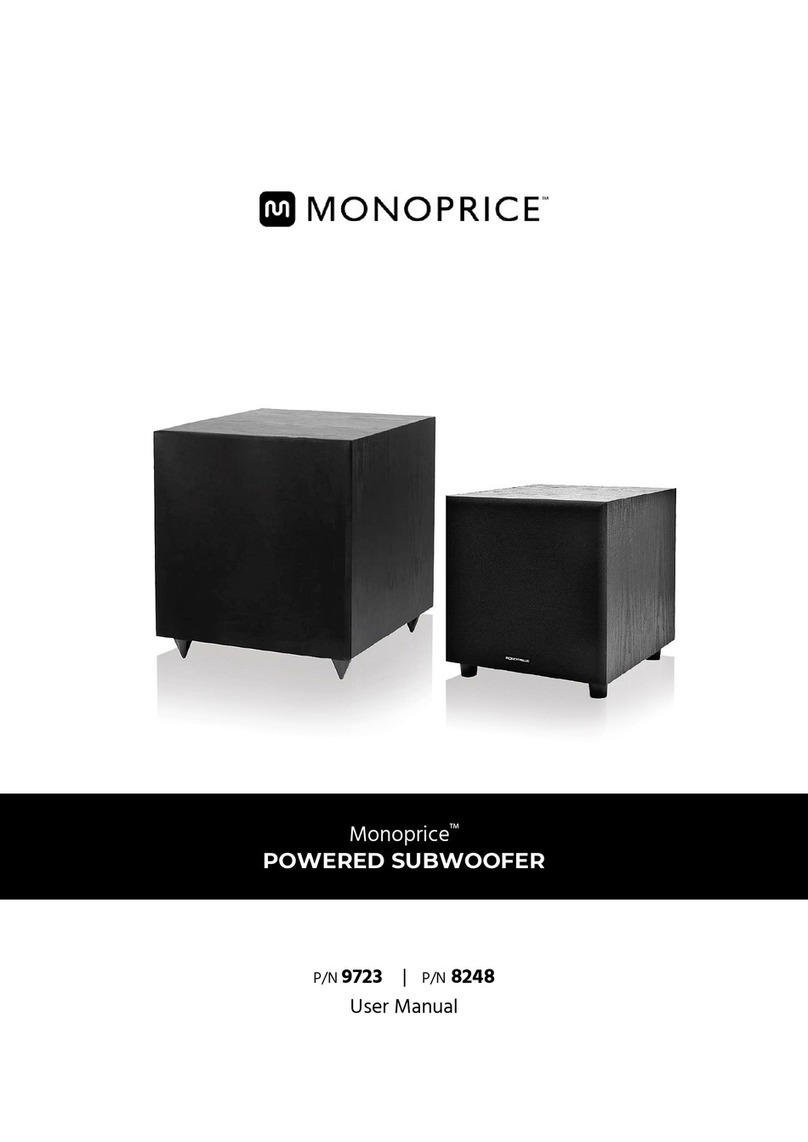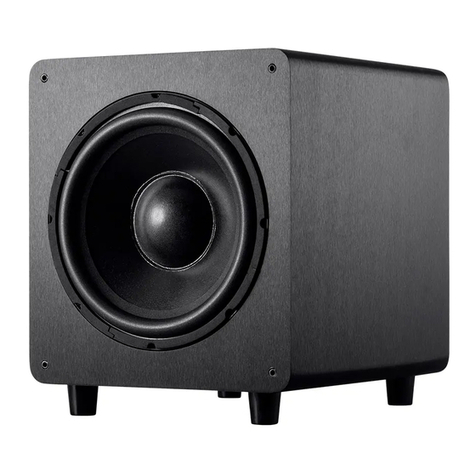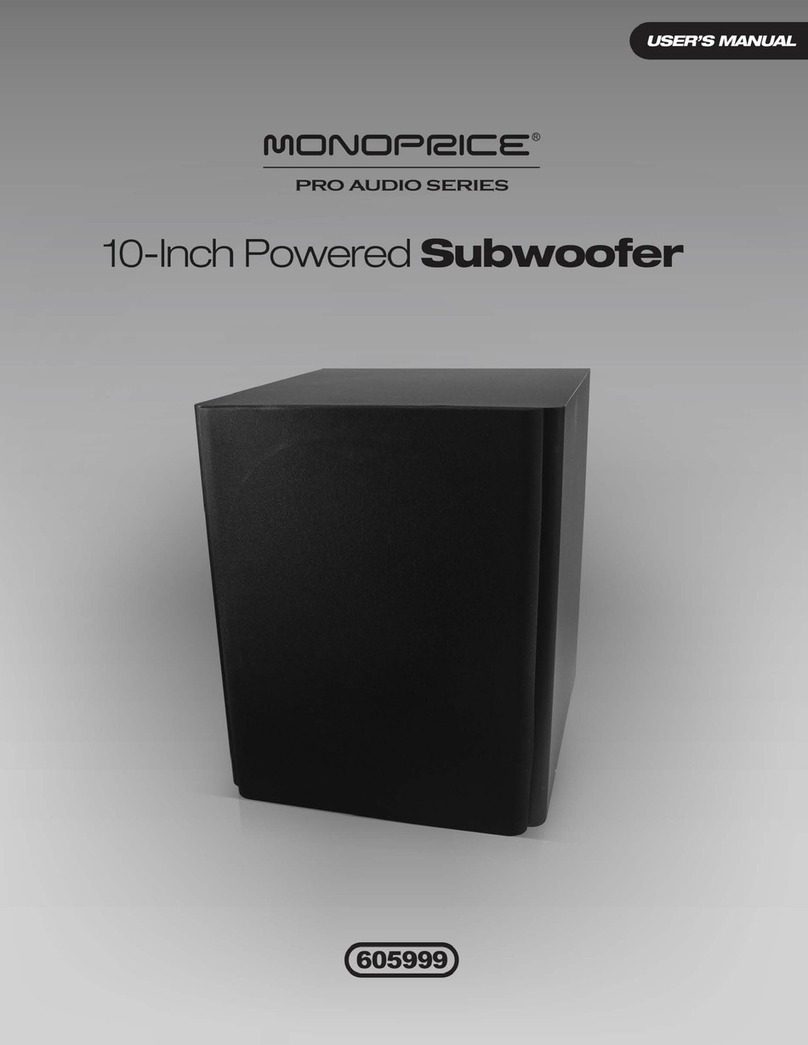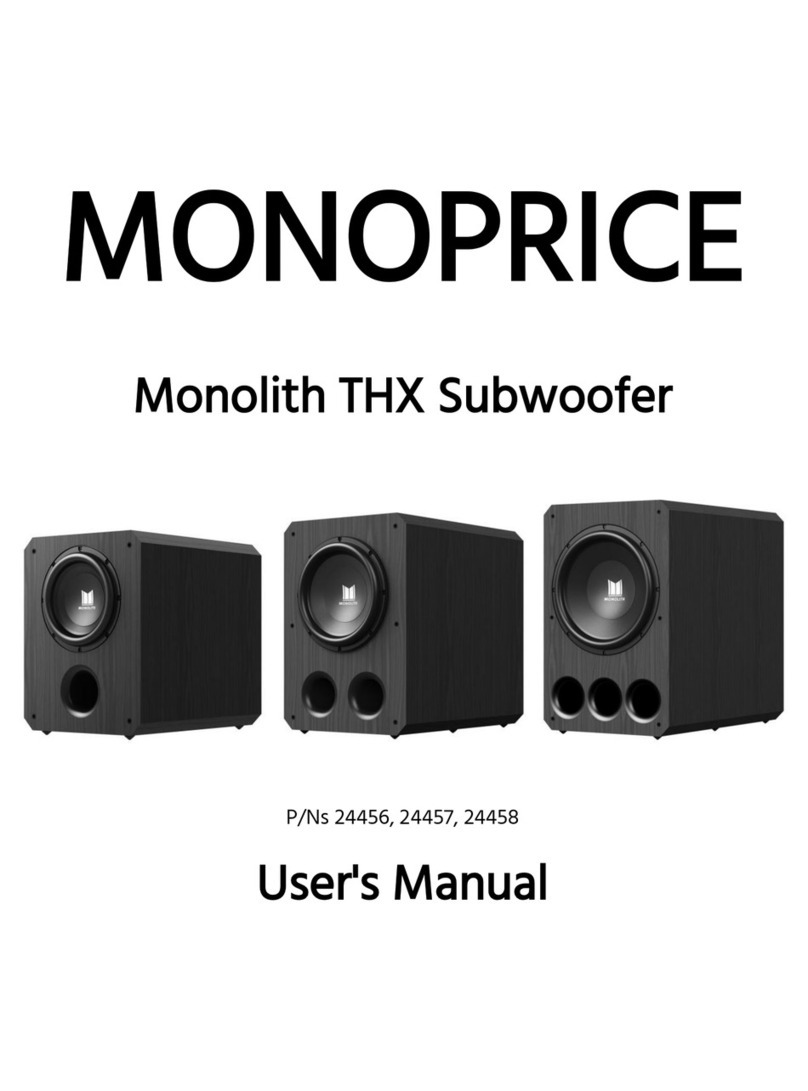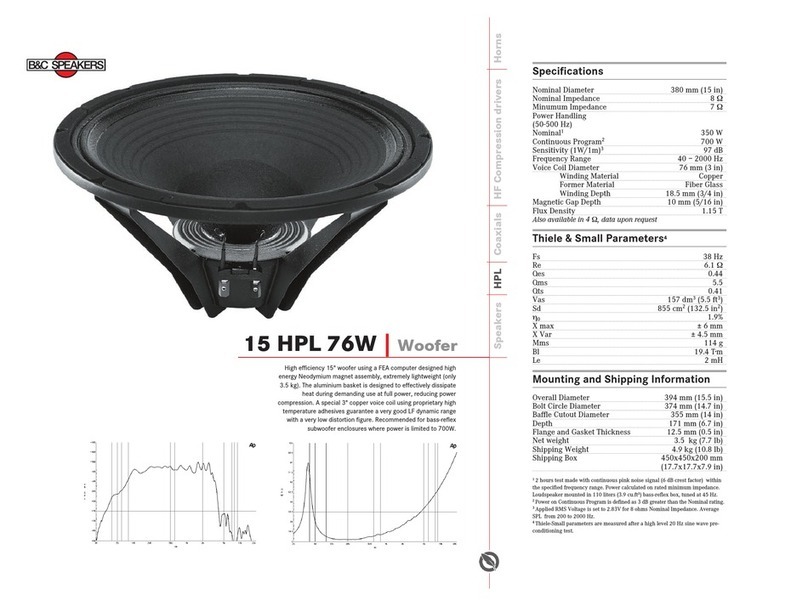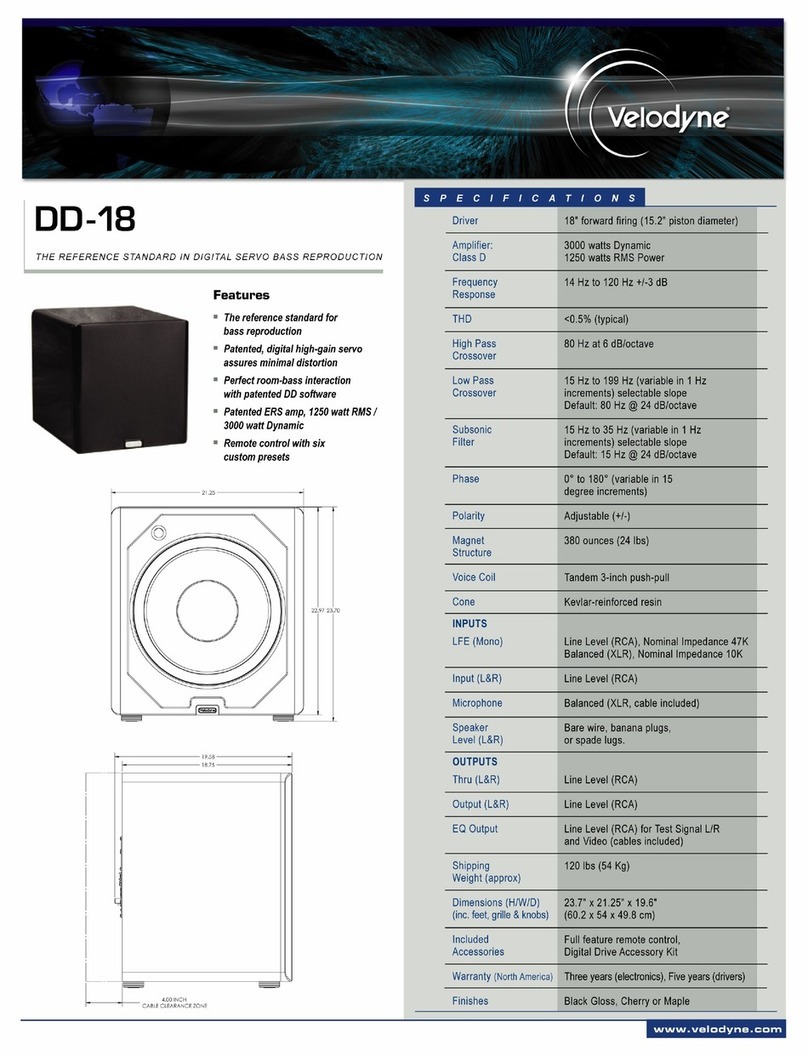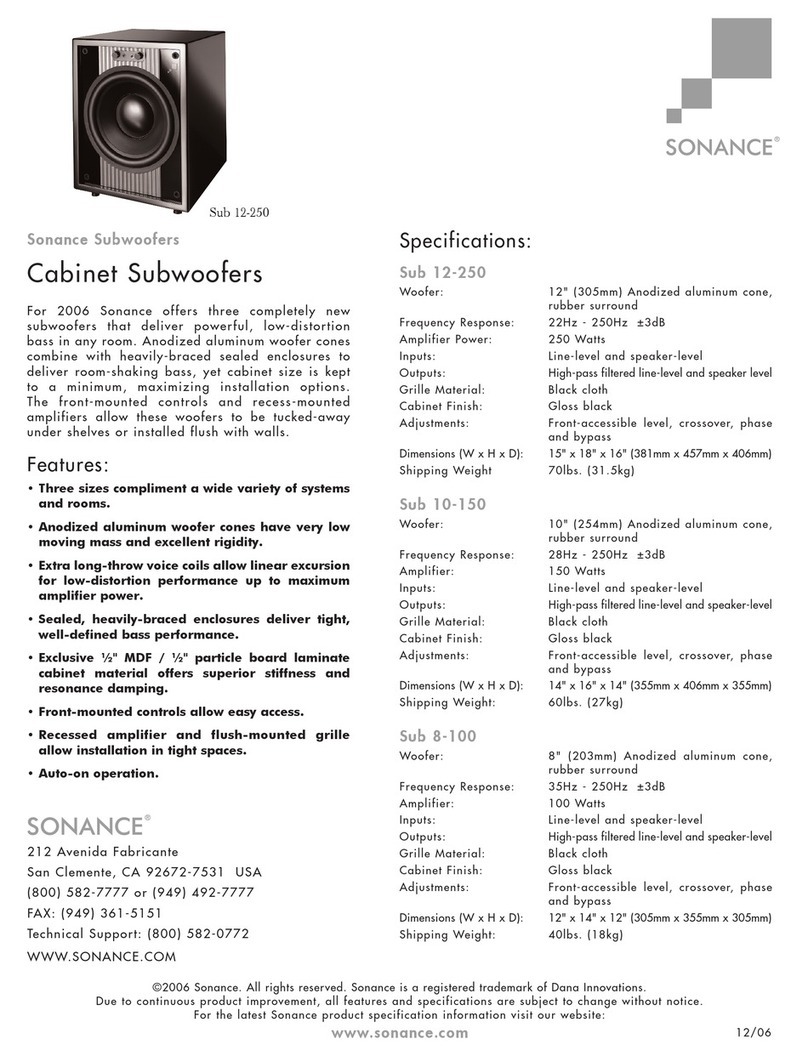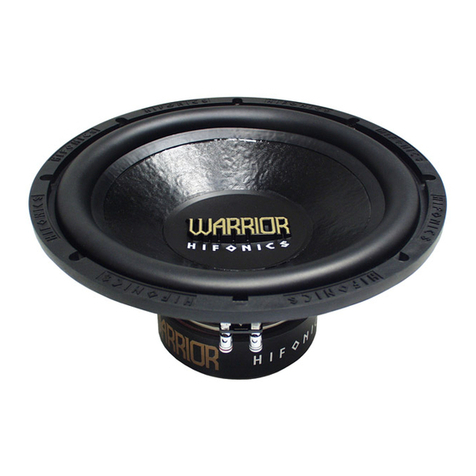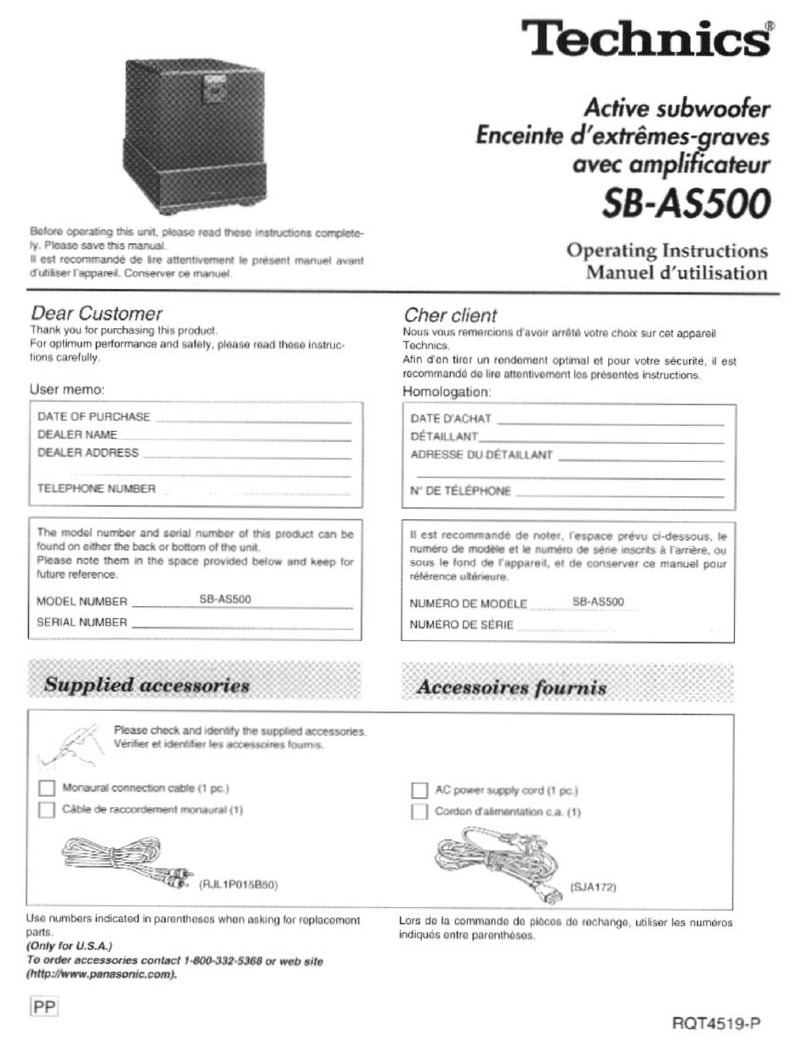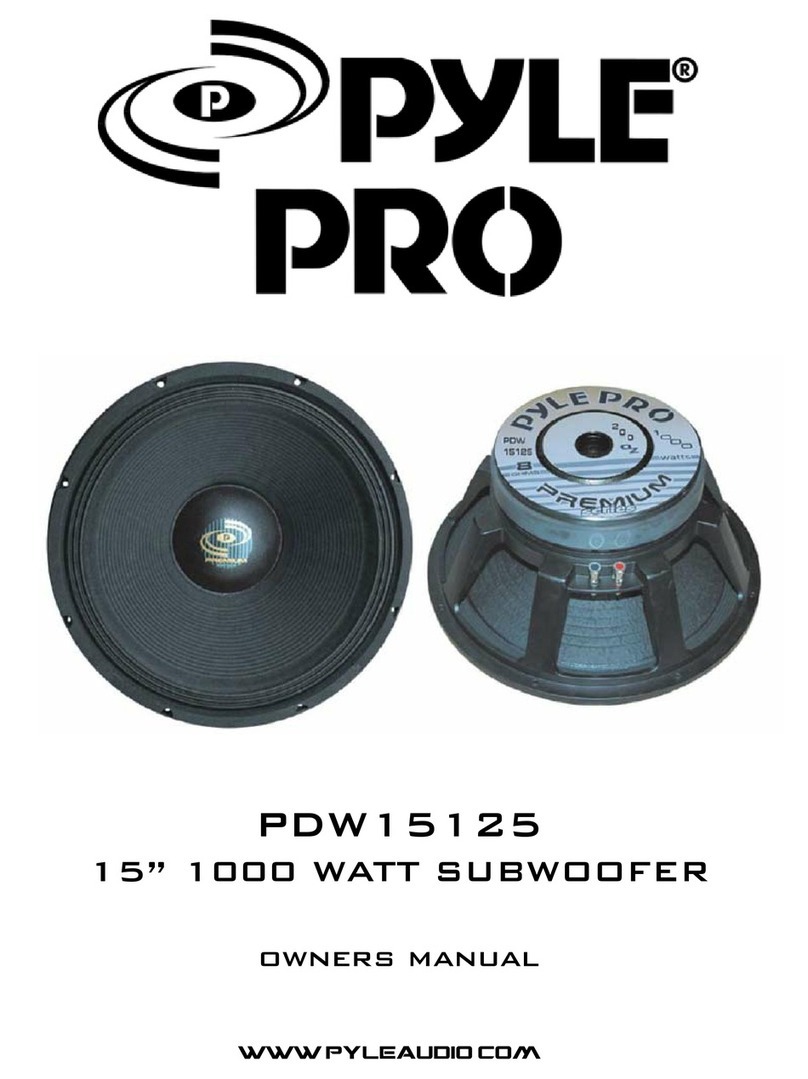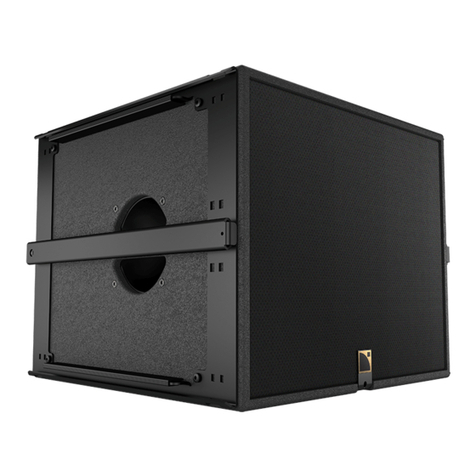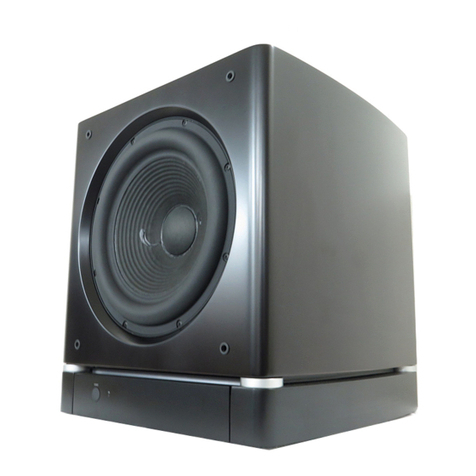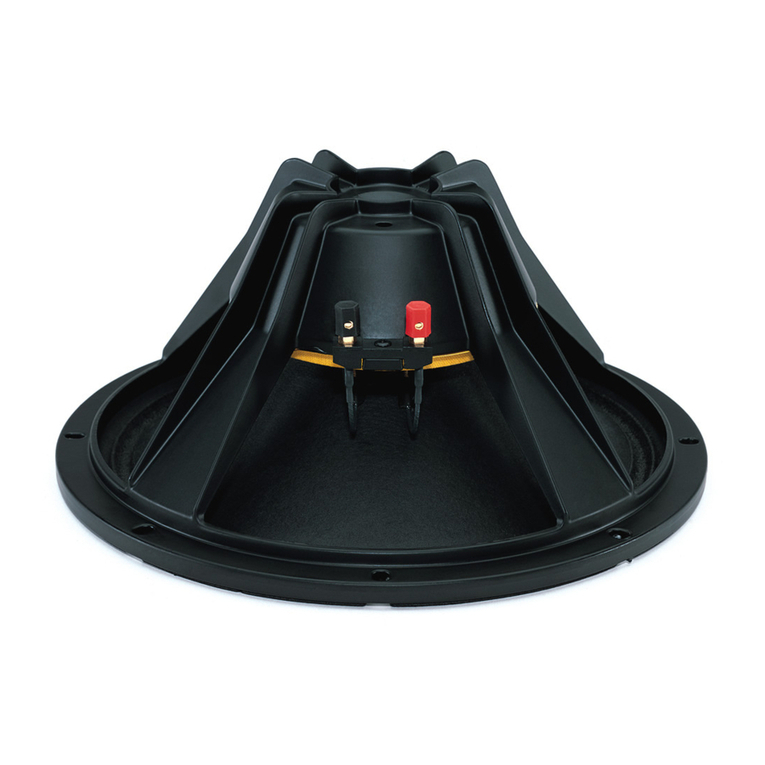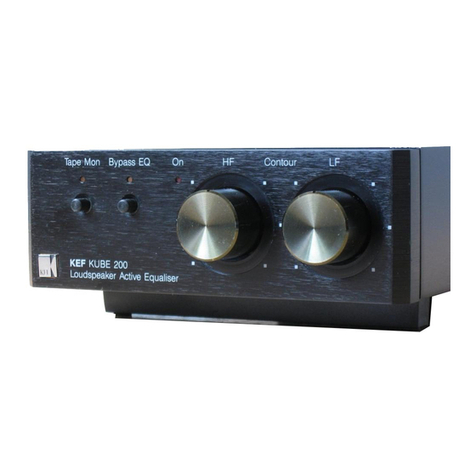
5
SPEAKER WIRE PREPARATION
Before attempting to make any connections it is best to look at the situation, get all the
necessary materials together, and then make all the connections at once.
First, look at the back of your amplifier or receiver to determine what options it offers for
making connections. Amplifiers and receivers typically employ either 5-way binding posts,
spring-loaded terminals, or push terminals for the speaker connections.
A 5-way binding post can accept bare speaker wire, spade plugs, pin plugs, and banana
plugs, while spring-loaded terminals and push terminals can accept either bare speaker
wire or pin plugs. Refer to the documentation that came with your amplifier or receiver to
determine the maximum size/gauge speaker wire the speaker terminals can accept.
This speaker features spring-loaded terminals, which can accept pin plugs or bare wire up
to 14AWG. If your amplifier can accept it, you should use 14AWG speaker wire. Using pin
plugs is highly recommended for several reasons. Plugs are easier to connect, don't run the
risk of stray wire strands shorting the connections, allow for use of heavier gauge speaker
wire in most cases, and it is much easier to identify the polarity from a color coded ring on
a plug then from a subtle marking along the length of a wire.
Because the speaker wire will necessarily be run through your walls, you must use in-wall
rated wire. This is required by fire safety codes and ensures that the wire jacket will not act
as an accelerant in the event of a fire.
Rather than using a fixed length speaker wire, it is best to get a roll and cut the wire to the
length you need. This ensures that there is a minimum amount of excess wire.
Before making the actual connections, cut a length of wire to size. Note the markings on
the wire that differentiate between each conductor. Sometimes the marking clearly
identifies a positive and negative side. Some common clearly positive and negative
markings or identifiers are:

